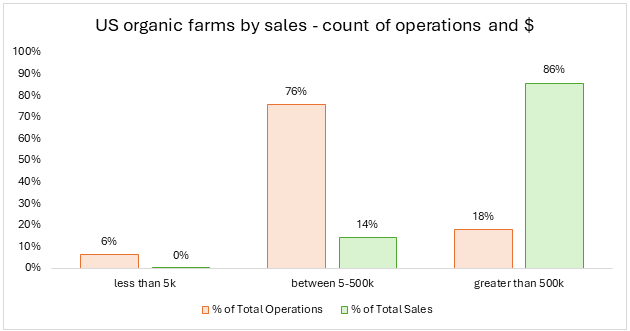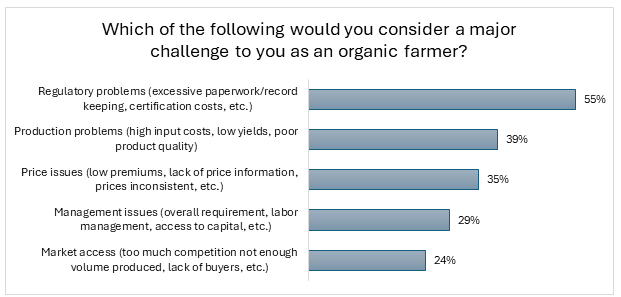When the Organic Foods Production Act (OFPA) was passed in 1990, organic food sales totaled just $1 billion. Today, organic products are in nearly every grocery store and household in America, with retail sales surpassing $71 billion.
Organic has evolved dramatically over the past 35 years. While you can still find organic food at farmers markets, local co-ops, and independent groceries, organic is now also available in convenience stores, national retailers, club stores, and online platforms. Today’s organic supply chain includes small and large farmers, farmer cooperatives, corporate farms, multigenerational producers, first-time farmers, and farmer groups made up of some of the smallest producers in the world. The businesses that handle, process, and sell organic products are just as diverse—ranging from startups, family-owned companies, and privately held brands to venture-backed firms and multinational corporations. This market penetration has allowed the benefits of organic to reach more people, animals, and land than ever before.
Yet despite these dramatic shifts in the market and the diversity of operations, our system of oversight remains largely unchanged. OFPA, which governs organic oversight, still treats all operations the same, regardless of size, scope, or risk level. Certification agencies and the National Organic Program (NOP) have expanded their capacity, and new rules like the Strengthening Organic Enforcement (SOE) rule have helped raise the bar to prevent fraud. But we are still using a one-size-fits-all model that doesn’t differentiate based on risk. This oversight model is not sustainable for continued growth across all sectors and sizes.
Inefficiency undermines both the credibility and the growth of the organic sector. As the saying goes, consumers will pay for quality, but they won’t pay for inefficiency. Treating all organic operations the same, regardless of their risk profile, squanders limited resources on minor labeling or paperwork infractions, while diverting attention away from larger threats to organic integrity. It also strains certifier capacity and raises costs without delivering added value to farmers, businesses, or consumers.
It’s time to rethink organic oversight, not to undo the strong foundation we’ve built, but to ensure we’re using our resources wisely.
According to the latest USDA NASS data, 86% of organic farm sales come from just 18% of operations, while 76% of operations account for only 14% of sales. Farms with under $5,000 in organic sales, currently exempt from certification, make up 6% of operations but contribute only 0.02% of total sales. While scale alone isn’t a risk factor, these figures reveal a structural imbalance. When an oversight system designed to manage large-scale operations is applied uniformly, it can place a disproportionate compliance burden on smaller operations while larger ones carry an outsized share of the financial costs that support the system. While NASS does not collect data for processors and international producers, we have no reason to believe those sectors would differ significantly.

The regulatory burden is real. When surveyed on key challenges, the results were clear: 55% of organic farmers identified certification paperwork, recordkeeping, and compliance costs as their top concern, over 40% more than those who cited other issues such as pay price, data access, input costs, yield drag, market access, or capital availability.

As we look ahead to the next Farm Bill, the Organic Trade Association is exploring policy reforms that preserve strong organic integrity while scaling oversight to match risk. We believe reform in this area will yield benefits for farmers, businesses, and certifiers of all sizes, ensuring that smaller operations face an appropriate and proportionate oversight burden, that larger operations are not disproportionately subsidizing the cost of certification for others, and that certifiers can more accurately allocate resources across their client portfolios.
This is not about weakening standards or creating loopholes. It is not about changing what it means to be organic. Rather, it's about introducing precision: ensuring that the most rigorous oversight is focused on the highest-risk operations, and that the burden of compliance reflects the complexity and risk of each operation, not just its certification status. Targeting oversight where it matters most will strengthen overall supply chain security and protect the organic brand from reputational harm.
Organic must remain a credible, trustworthy label, but it must also be a viable and appealing option for farmers and businesses of all sizes. It will take the full organic community to make this change, including public engagement and input from the National Organic Standards Board.
If you’re interested in joining the conversation, sign up for regulatory updates on this page.
